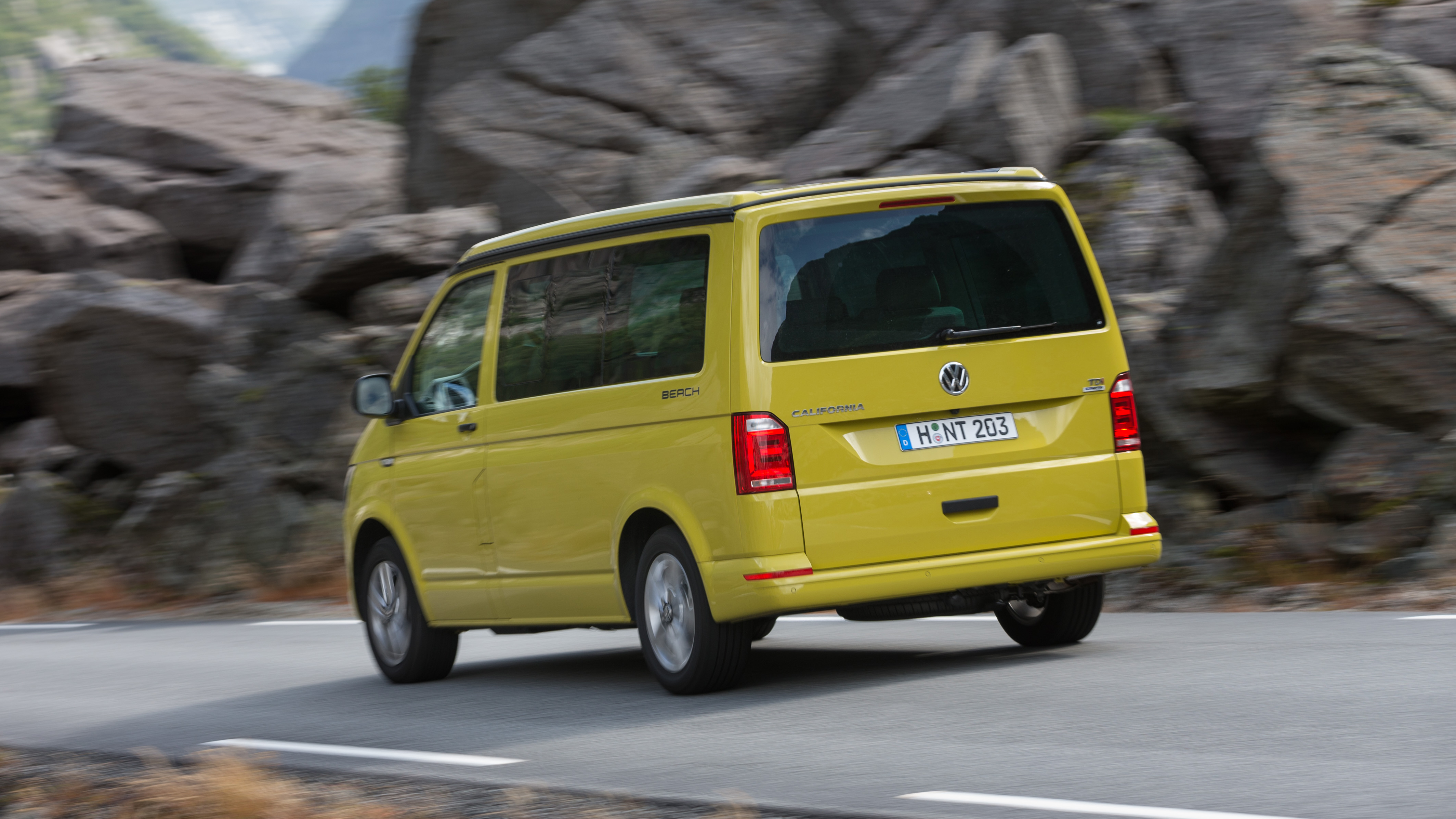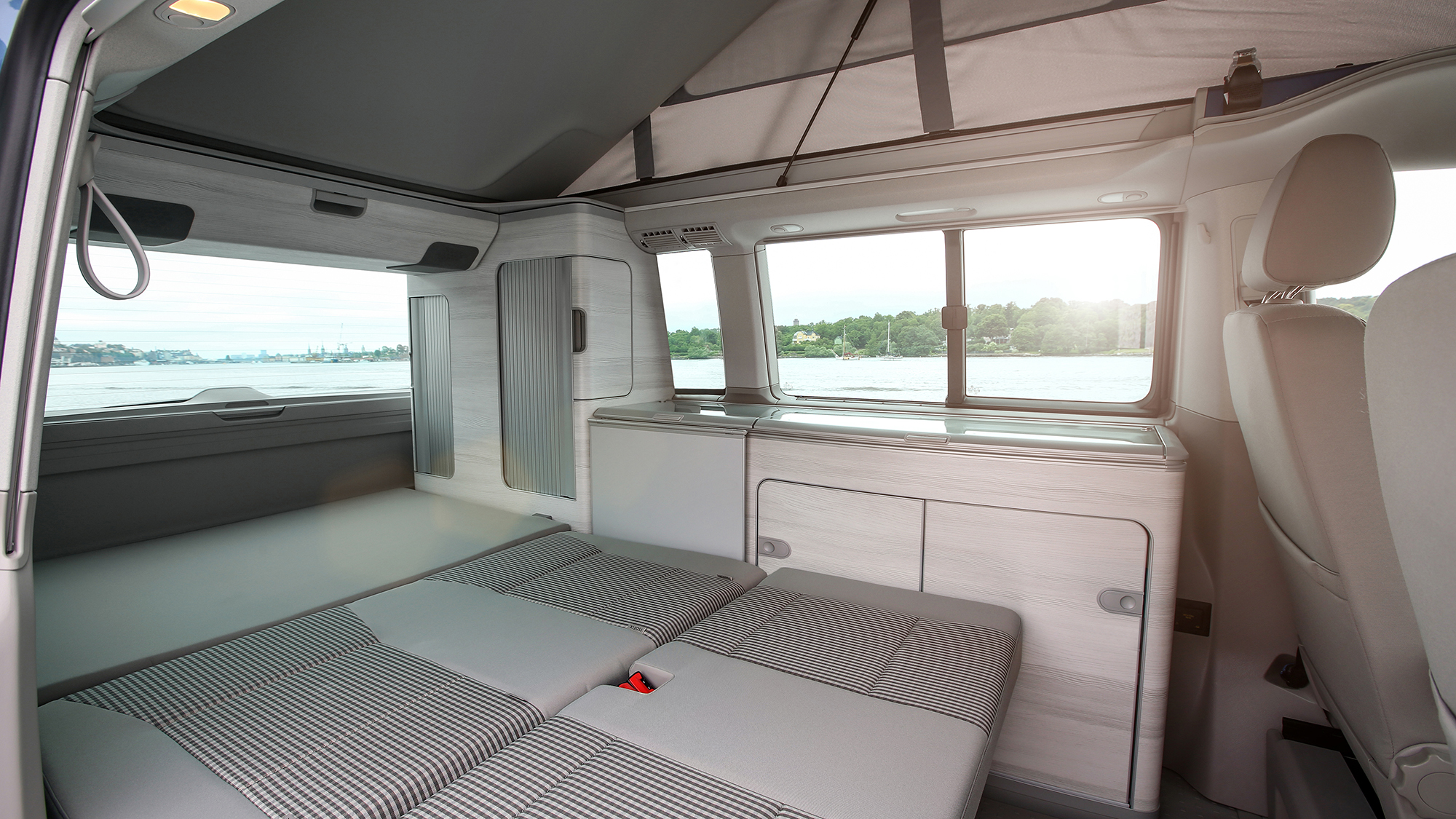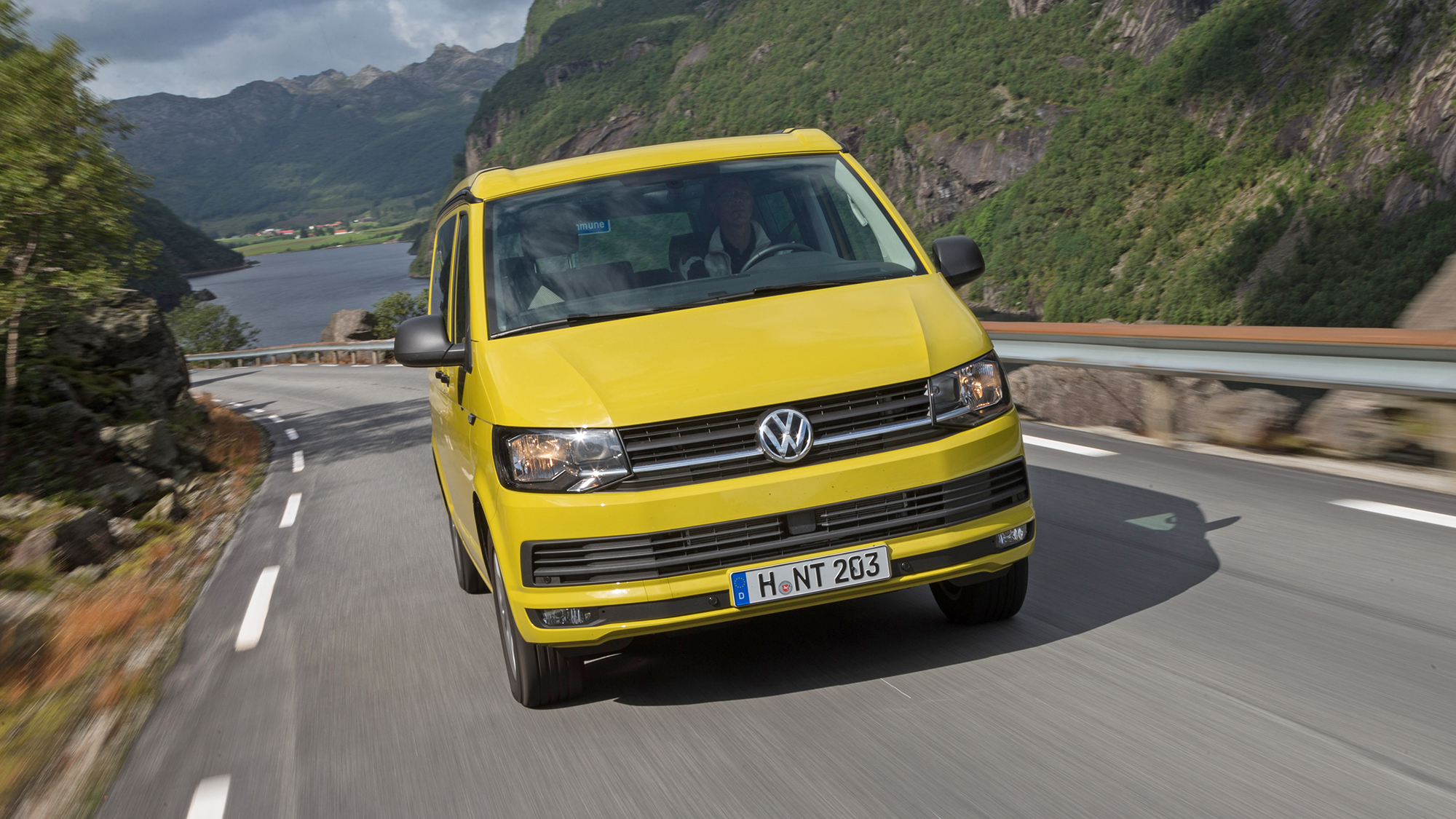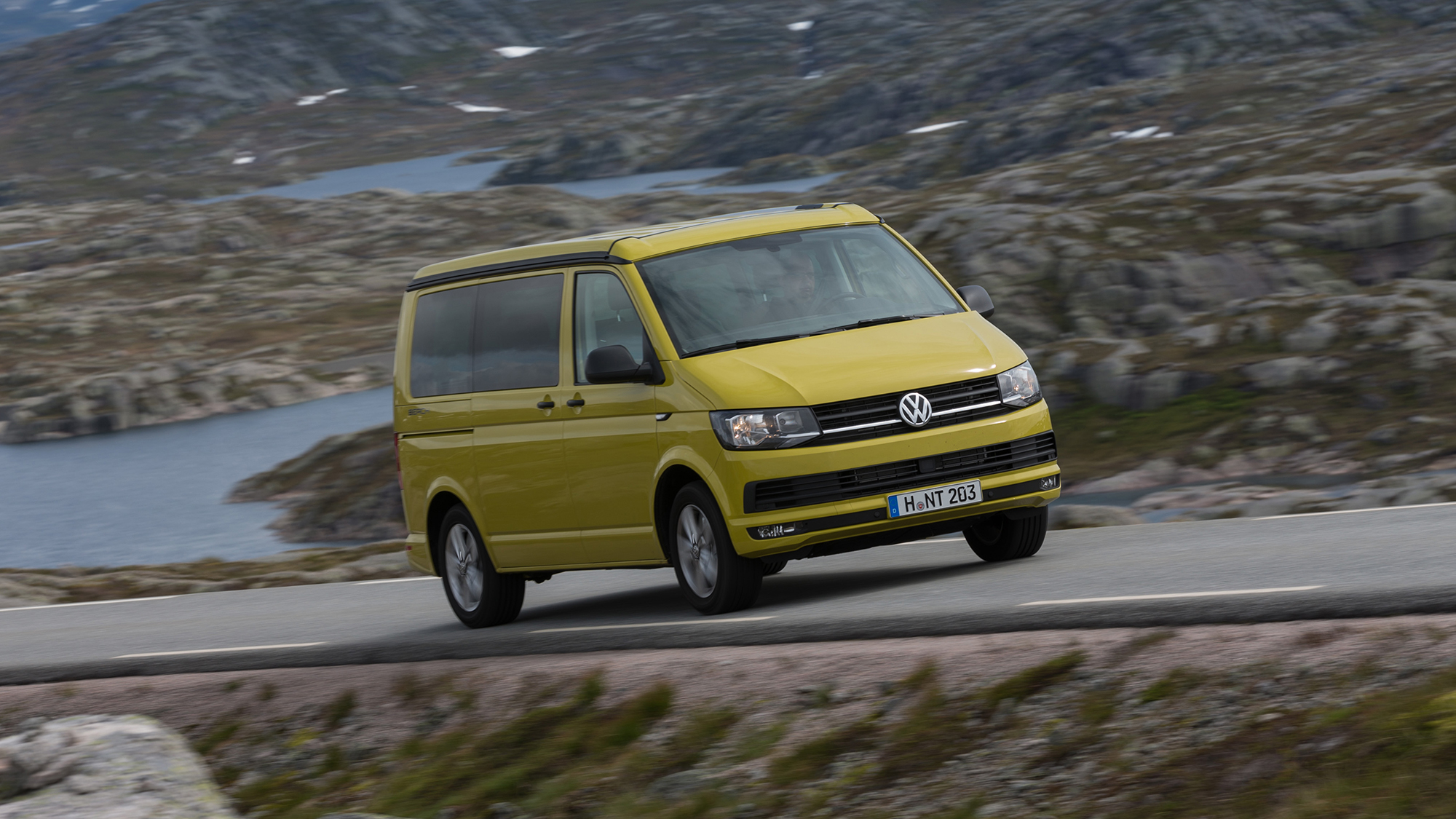
What’s this, then?
It’s the latest Volkswagen California. It couldn’t be much different to its Ferrari-made namesake, being, y’know, a diesel-powered campervan. It’s arguably more of a hero than the Fezza, though, laser-guided at its target audience with a truly precise purpose and exceedingly clever packaging.
Van-based campers are available in all shapes and sizes, of course, but VW boasts that the Cali is the only one with its kitchen and bedrooms built in from birth in the factory, rather than afterwards via a third-party company. It also has some unbeatable heritage, tracing its roots back to those classic 21-window VW Campers of the Fifties.
So what’s new?
Essentially the California has been updated because the van upon which it’s based – VW’s Transporter – has just reached its sixth generation. Naturally, there’s not been much change in the way of design, with fancier headlights and some braver colour schemes about the sum of it.
Bigger news lies beneath the Cali's boxy exterior. Three engines are available, all of them 2-litre turbodiesels, in 100bhp, 148bhp and 201bhp flavours. The more powerful two offer four-wheel drive and a DSG automatic gearbox among their options.
The Cali blurs the lines between car and van better than ever before, too, with all manner of technology available, including a big posh stereo, adaptive suspension, active cruise control and modern safety stuff like blind spot monitoring. Those with a limitless budget can craft a upmarket hotel room on wheels. There’s even Apple Carplay.
What about the campy stuff?
In the UK there are two trim levels available, Beach and Ocean. The former offers five or seven seats, and comes with two double beds: one downstairs, when the seats are folded down, and one in the elevating roof you see in the pictures. It’s a cosy night’s sleep, too, with a heating system on board for colder weather.
Buy an Ocean and you get the same amount of bedding but just four seats, the others elbowed out by a kitchenette (two hobs, a sink and fridge) and an assortment of cupboards. You also get mildly plusher interior trim, while the upstairs bedroom unfurls electronically.
Top Gear
Newsletter
Thank you for subscribing to our newsletter. Look out for your regular round-up of news, reviews and offers in your inbox.
Get all the latest news, reviews and exclusives, direct to your inbox.
Prices start at £37,657 for a 100bhp Beach, rising to £54,975 for a 201bhp Cali Ocean with four-wheel drive and DSG.
That’s a couple of decades’ of holidays abroad…
Indeed it is. But the Cali is as much a rival for 20 fortnights in Mallorca as it is the Porsche Boxster with which its prices compare.
Nope, you buy one of these because you want the flexibility of throwing a bunch of stuff in it and just going somewhere, quite probably at the drop of a Goretex hat and with some sort of lifestyle equipment attached to it.
And the California is so much more palatable than a motorhome, or the dreaded caravan. It’s more appropriate on single-carriageway roads on bank holiday weekends, for starters, but it’s also so, so easy to drive.
You’re not going to talk about actual handling, are you?
Maybe a little. The truth is the Cali grips well and doesn’t roll anywhere near as much as you might think, so cornering speeds will be dictated by how much you value the crockery in the cupboards, not its dynamic ability. And the driving position isn’t quite as stoically upright as its van roots might have you fearing. Sensors and a camera can ease any parking worries.
And performance?
While the entry-level engine is predictably the running cost champion with a combined 44.8mpg, its 19.4-second 0-62mph time doesn’t lie. With 2.5 tonnes to shift when empty, it’s slow, and fully loaded it’ll require some proper pedalling up hills.
You’re better choosing one of the other engines: the 148bhp tune, a little over two grand more, is more than game enough, and uses barely any less fuel.
Both gearboxes operate slickly, while front-driven Calis don’t feel any harder work on road than those with 4Motion, so the rest of the spec depends on how easy-going you like your journeys between campsites, and how off-piste those sites actually are.
We’d probably buy the Beach and a portable stove for maximum flexibility, too. Get a seven seater and a pop-up tent for extra passengers and you’ve probably rinsed every last drop of practicality from an already quite able ‘car’.
So is the California still a TG hero?
Unquestionably. No change was strictly needed, in truth, so instead VW has focused on further rounding off the sharp, van-based edges and created an even more car-like experience. It’s a doddle to drive and a joy to explore its various nooks and crannies, such as the fold-out picnic table and chairs hidden in the door cards.
If a Cali didn’t make sense to you before, it still won’t. But for those who get it, this is (unless Mercedes brings its Marco Polo to Britain) as petrolhead-friendly as campervanning gets. Several members of the TG office have a rather bluff, boxy space in the lottery-win garage for one. Do you?
Featured

Trending this week
- Car Review
BMW 1 Series
- Top Gear's Top 9
Nine dreadful bits of 'homeware' made by carmakers








